Why Nations Fail Illustrated
Lecture 6
Origins of Inclusive Institutions #2
Why North, not Latin, America?
November 13, 2018
Masayuki Kudamatsu
Chapter 1

Today's Road Map
Spanish Colonization of the Americas
English Colonization of North America
Political Institutions of the U.S. and Mexico after independence
Term paper preparation #2
Economic Institutions of the U.S. and Mexico
Consequences: Two Nogales

Today's Road Map
Spanish Colonization of the Americas
English Colonization of North America
Political Institutions of the U.S. and Mexico after independence
Term paper preparation #2
Economic Institutions of the U.S. and Mexico
Consequences: Two Nogales
Spanish conquest of Americas
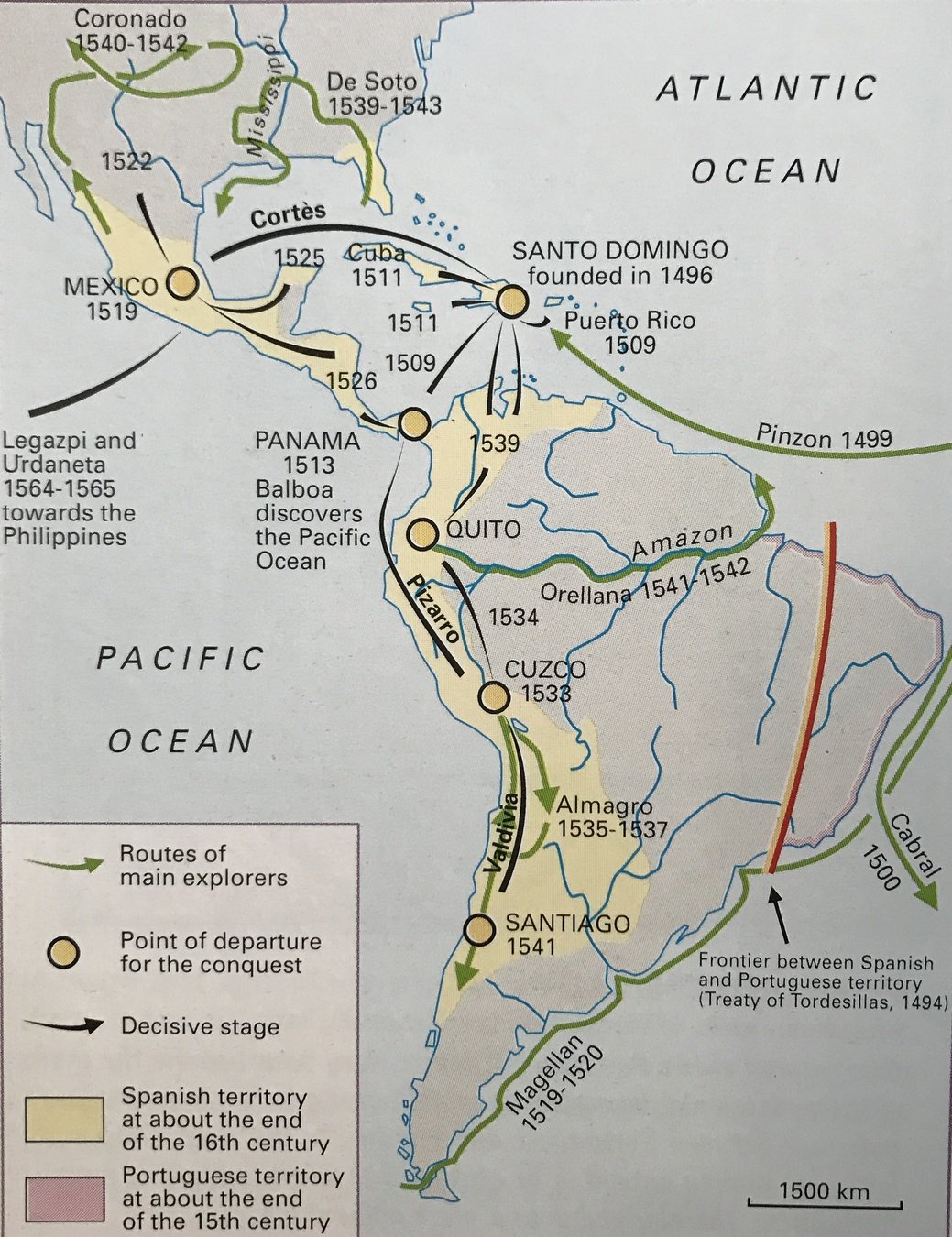
Source: Frederic Delouche ed. (2001) Illustrated History of Europe (2nd ed.) Cassell & Co, p. 212
Spanish conquest of Americas (cont.)
Spanish colonists want
(1) local people to work for them
(2) gold & silver to plunder
Asuncion discovered in 1537
e.g.
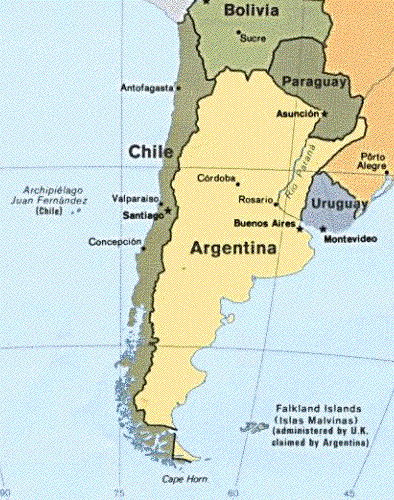
But no minerals to extract
Local hunter-gatherers difficult to coerce
Buenos Aires founded in 1534
Local farmers easy to coerce
Buenos Aires abandoned by 1541
Encomienda
Spanish King
Spanish colonists
Indigenous peoples
Indigenous peoples
Spread of Christianity
Tribute
Forced labor
Christianity
Later force every adult man to annually pay a head tax in silver
Economic institutions in Spanish Americas (cont.)
| economic institutions | ||
|---|---|---|
| Secure for everyone |
Property rights | Insecure for majority of people |
| Free | Occupational choice |
Forced labor |
| Free | Entry of new businesses | Prevented by monopolies |
| Unbiased | System of laws | Biased for the powerful/rich |
| Promoted | Public service provision | Discouraged |
Economic Institutions
Inclusive
Extractive
Property rights
Secure for everyone
Insecure for
majority of people
Occupational choice
Free
Forced labor
Entry of
new businesses
Free
Prevented by
monopolies
System of laws
Unbiased
Biased for
the powerful / rich
Public service provision
Provided
Limited
Mita
1545: Large silver mines discovered in Potosi
Need a lot of miners to extract silver
1573-1825:
1/7 of adult men
in the designated area
were forced to work
in Potosi mines
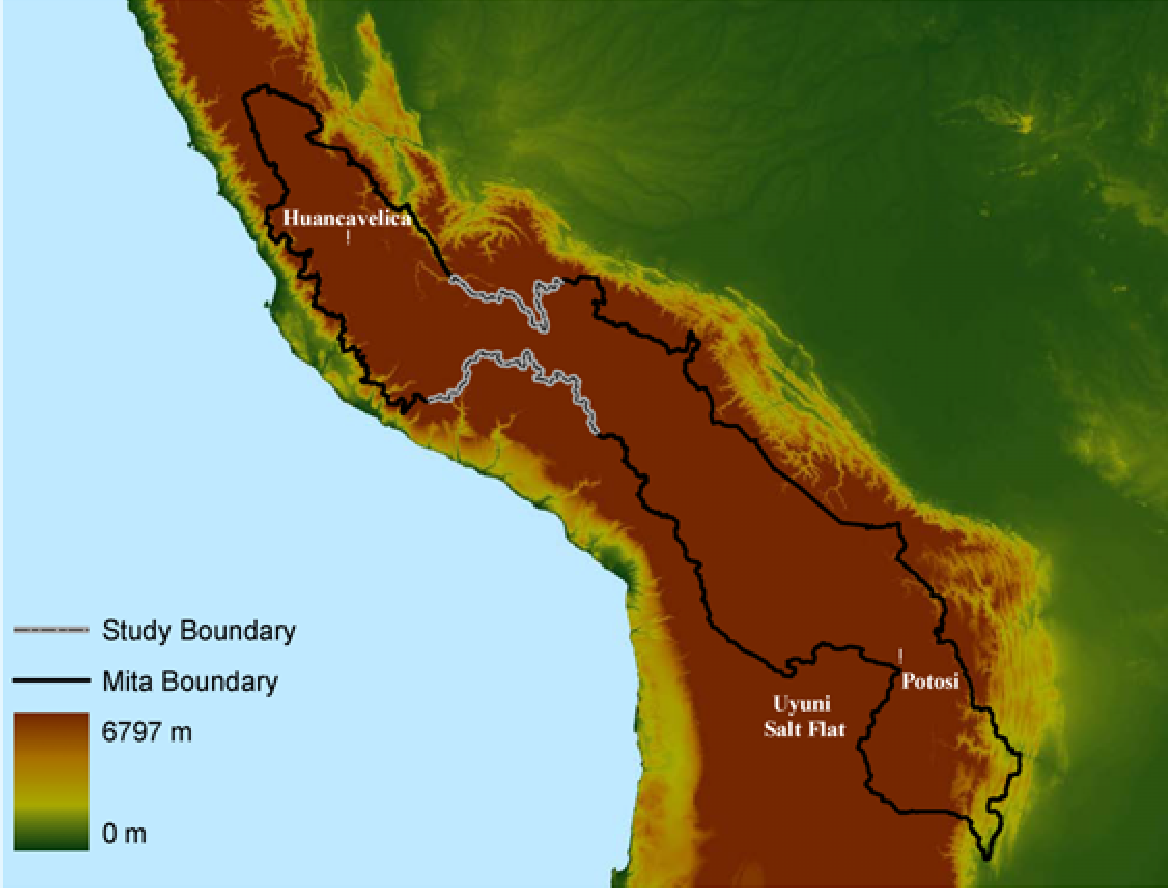
Source: Figure 1 of Dell (2010)
Economic institutions in Spanish Americas (cont.)
Economic institutions in Spanish Americas (cont.)
Force locals to buy goods at the prices determined by Spaniards
Trajin
Force locals to carry heavy loads of goods for Spanish businesses
e.g. wine, coca leaves, textiles
| economic institutions | ||
|---|---|---|
| Secure for everyone |
Property rights | Insecure for majority of people |
| Free | Occupational choice |
Forced labor |
| Free | Entry of new businesses | Prevented by monopolies |
| Unbiased | System of laws | Biased for the powerful/rich |
| Promoted | Public service provision | Discouraged |
Economic Institutions
Inclusive
Extractive
Property rights
Secure for everyone
Insecure for
majority of people
Occupational choice
Free
Forced labor
Entry of
new businesses
Free
Prevented by
monopolies
System of laws
Unbiased
Biased for
the powerful / rich
Public service provision
Provided
Limited
Economic institutions in Spanish Americas (cont.)
Force locals' living standards down to a subsistence level
Extract all income in excess for Spaniards

Today's Road Map
Spanish Colonization of the Americas
English Colonization of North America
Political Institutions of the U.S. and Mexico after independence
Term paper preparation #2
Economic Institutions of the U.S. and Mexico
Consequences: Two Nogales
English conquest of North America
English colonists initially wanted the same as Spanish did
(1) local people to work for them
(2) gold & silver to plunder
e.g.
Jamestown, Virginia
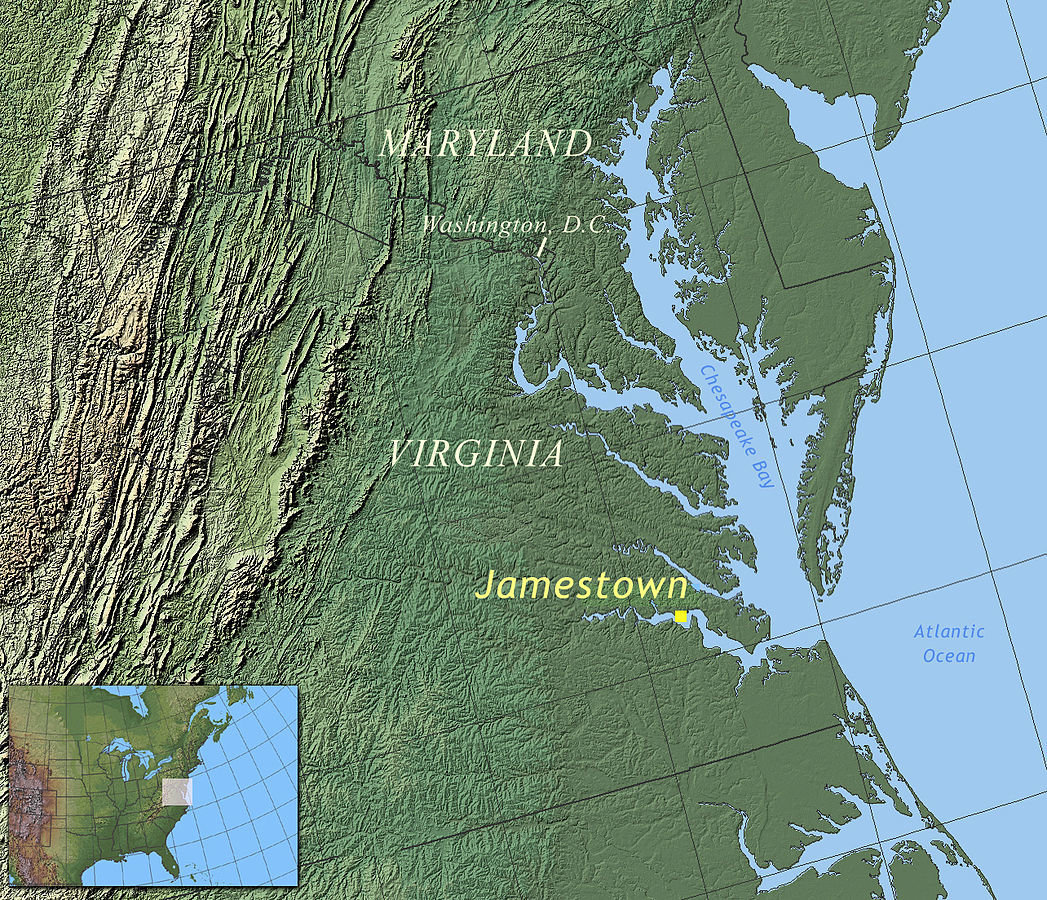
Image source: Wikimedia Commons
Founded in 1607
English settlers:
search for precious metals
run low on food in winter
attempted to capture local chief
English conquest of North America (cont.)
Once failed, the English elite tried to force English settlers to work
Virginia Company for Jamestown (1610)
Lord Baltimore in Maryland (1632)
Anthony Ashley-Cooper in Carolina (1663)
All these attempts failed
English settlers ran away
English conquest of North America (cont.)
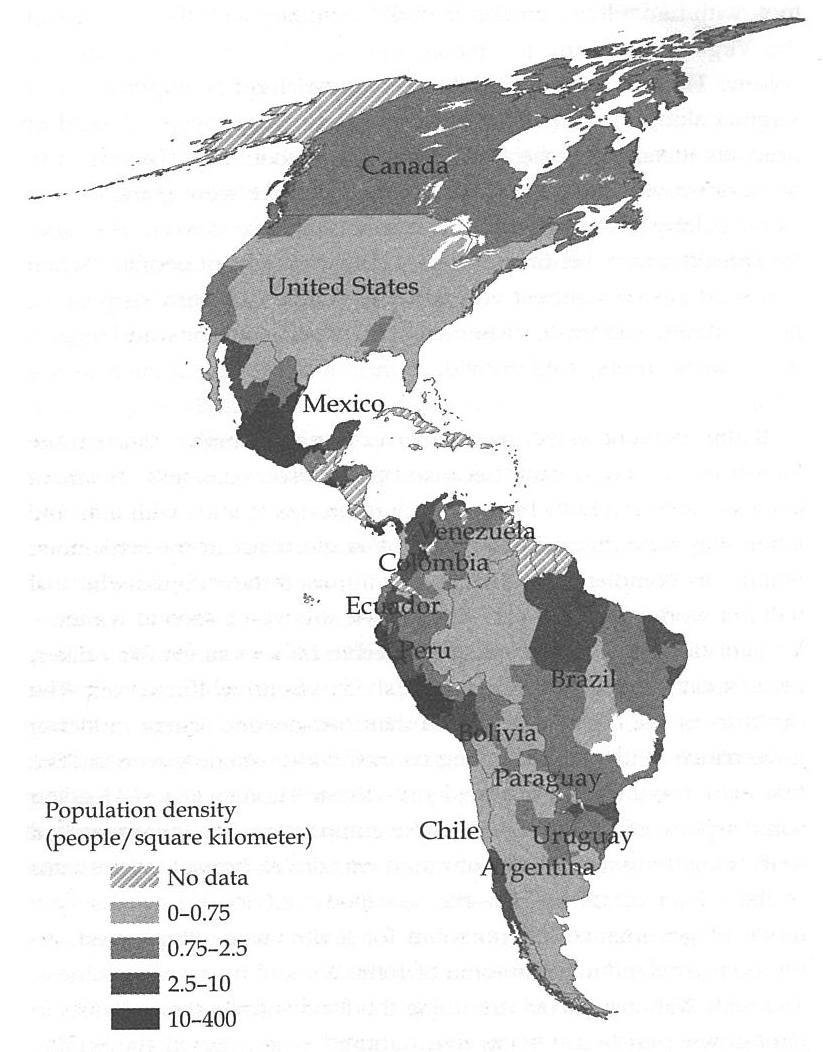
Image source: Map 2 of Why Nations Fail (p. 24)
Forced labor
didn't work
Population density in 1500
North America
was sparsely populated
Birth of Inclusive Institutions in North America
Virginia Company gave each male settler in Jamestown
50 acres per his family member & servant
General Assembly was introduced in Jamestown
where each adult man has a say in politics
By 1720s,
all 13 colonies had
assemblies of
male property owners
1618
Incentives to work hard
1619
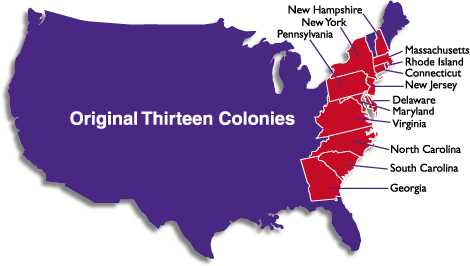
| economic institutions | ||
|---|---|---|
| Secure for everyone |
Property rights | Insecure for majority of people |
| Free | Occupational choice |
Forced labor |
| Free | Entry of new businesses | Prevented by monopolies |
| Unbiased | System of laws | Biased for the powerful/rich |
| Promoted | Public service provision | Discouraged |
Economic Institutions
Inclusive
Extractive
Property rights
Secure for everyone
Insecure for
majority of people
Occupational choice
Free
Forced labor
Entry of
new businesses
Free
Prevented by
monopolies
System of laws
Unbiased
Biased for
the powerful / rich
Public service provision
Provided
Limited
Inclusive
Extractive
Both
Plurality
and
Centralized
State
Either
Absolutist
or
Lack of
Centralization
Political Institutions

Today's Road Map
Spanish Colonization of the Americas
English Colonization of North America
Political Institutions of the U.S. and Mexico after independence
Term paper preparation #2
Economic Institutions of the U.S. and Mexico
Consequences: Two Nogales
Mexico's independence from Spain in 1821
The colonial elite decided to declare independence
Napoleon occupied Spain except for the port of Cadiz
The Spanish king was captured and abdicated
Spain adopted the Cadiz Constitution
Constitutional monarchy
Equality before the law
Abolishing all forms of labor coercion
1808
1820
1821
Political instability in 19c Mexico
52 presidents in 43 years
mostly unconstitutionally seizing power
Lost Mexican-American War,
giving up New Mexico and Arizona
to the U.S.
1822
President Augustin de Iturbide dismissed congress
1824-1867
Severe weakening of the state
1848
1836
Texas declared independence (annexed to U.S. in 1846)
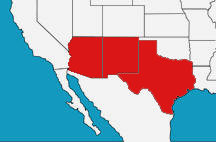
Inclusive
Extractive
Both
Plurality
and
Centralized
State
Either
Absolutist
or
Lack of
Centralization
Political Institutions
19th-century politics in U.S.
One proslavery and one antislavery state were always added to the union together, to keep the balance in the Senate
Civil Wars (1860-65) didn't last forever
Allocation of Congressional seats among states
Southern states want:
Slaves to be counted as well
Compromise: Count a slave as 3/5 of a free person
Missouri Compromise
Northern states want:
In proportion to population excluding slaves
Inclusive
Extractive
Both
Plurality
and
Centralized
State
Either
Absolutist
or
Lack of
Centralization
Political Institutions

Today's Road Map
Spanish Colonization of the Americas
English Colonization of North America
Political Institutions of the U.S. and Mexico after independence
Term paper preparation #2
Economic Institutions of the U.S. and Mexico
Consequences: Two Nogales
Economic institutions of U.S. vs Mexico
Who obtains monopoly rights
Banking sector
Late 19c expansion of international trade
Antitrust law enforcement
Patent system in U.S.
Granted to all sorts of people
Only 19% were the sons of landowners & professionals
40% attended only primary school or less
Who obtains monopoly rights
| economic institutions | ||
|---|---|---|
| Secure for everyone |
Property rights | Insecure for majority of people |
| Free | Occupational choice |
Forced labor |
| Free | Entry of new businesses | Prevented by monopolies |
| Unbiased | System of laws | Biased for the powerful/rich |
| Promoted | Public service provision | Discouraged |
Economic Institutions
Inclusive
Extractive
Property rights
Secure for everyone
Insecure for
majority of people
Occupational choice
Free
Forced labor
Entry of
new businesses
Free
Prevented by
monopolies
System of laws
Unbiased
Biased for
the powerful / rich
Public service provision
Provided
Limited
Porfirio Diaz's dictatorship (1876-1910)
Land expropriated
Monopolies granted to his supporters
Who obtains monopoly rights (cont.)
| economic institutions | ||
|---|---|---|
| Secure for everyone |
Property rights | Insecure for majority of people |
| Free | Occupational choice |
Forced labor |
| Free | Entry of new businesses | Prevented by monopolies |
| Unbiased | System of laws | Biased for the powerful/rich |
| Promoted | Public service provision | Discouraged |
Economic Institutions
Inclusive
Extractive
Property rights
Secure for everyone
Insecure for
majority of people
Occupational choice
Free
Forced labor
Entry of
new businesses
Free
Prevented by
monopolies
System of laws
Unbiased
Biased for
the powerful / rich
Public service provision
Provided
Limited
Banking sector
U.S. politicians in 18th century
Set up state bank monopolies
Give to their friends in exchange for part of monopoly profits
Borrow money from banks
But such politicians lost elections
# of banks rose from 338 in 1818 to 27,864 in 1914
Offer cheap loans to those with patent to start businesses
| economic institutions | ||
|---|---|---|
| Secure for everyone |
Property rights | Insecure for majority of people |
| Free | Occupational choice |
Forced labor |
| Free | Entry of new businesses | Prevented by monopolies |
| Unbiased | System of laws | Biased for the powerful/rich |
| Promoted | Public service provision | Discouraged |
Economic Institutions
Inclusive
Extractive
Property rights
Secure for everyone
Insecure for
majority of people
Occupational choice
Free
Forced labor
Entry of
new businesses
Free
Prevented by
monopolies
System of laws
Unbiased
Biased for
the powerful / rich
Public service provision
Provided
Limited
Banking sector (cont.)
Mexican politicians
Set up state bank monopolies
Give to their friends in exchange for part of monopoly profits
Borrow money from banks
Such politicians could stay in power
1910: only 42 banks with top 2 controlling 60% of assets
| economic institutions | ||
|---|---|---|
| Secure for everyone |
Property rights | Insecure for majority of people |
| Free | Occupational choice |
Forced labor |
| Free | Entry of new businesses | Prevented by monopolies |
| Unbiased | System of laws | Biased for the powerful/rich |
| Promoted | Public service provision | Discouraged |
Economic Institutions
Inclusive
Extractive
Property rights
Secure for everyone
Insecure for
majority of people
Occupational choice
Free
Forced labor
Entry of
new businesses
Free
Prevented by
monopolies
System of laws
Unbiased
Biased for
the powerful / rich
Public service provision
Provided
Limited
Late 19c expansion of international trade
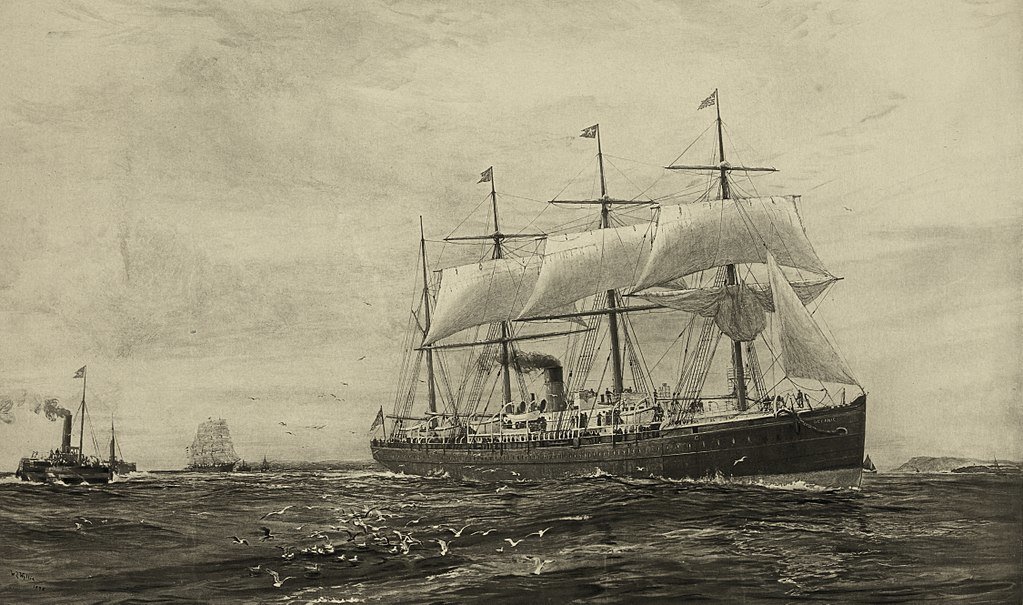
Image source:
By 1870
Steamship became economically viable for transoceanic trades
Late 19c expansion of international trade (cont.)
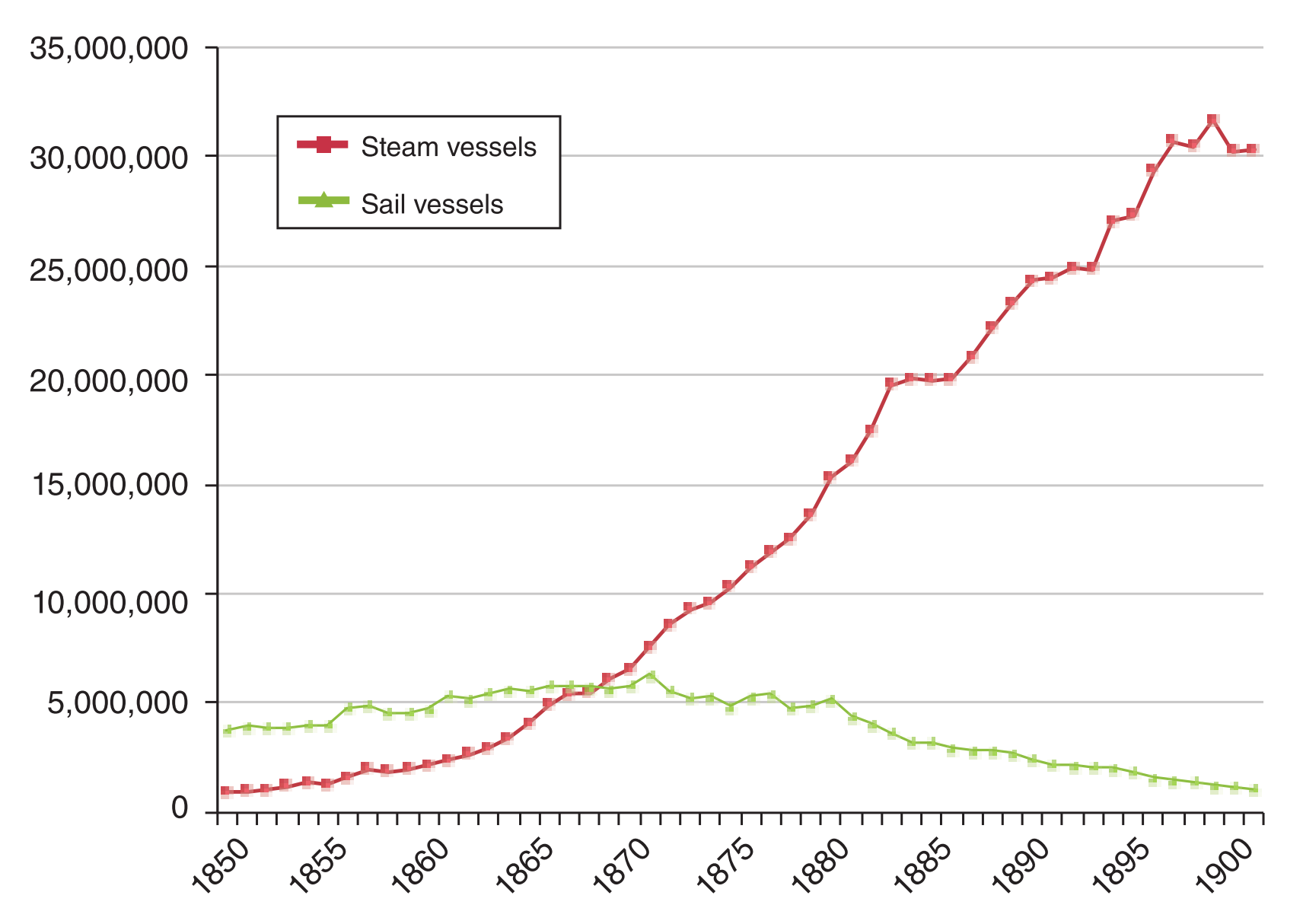
Source:
Figure 3 of Pascali (2017)
Total tonnage of British vessels for international trade
entering in British ports
Late 19c expansion of international trade (cont.)
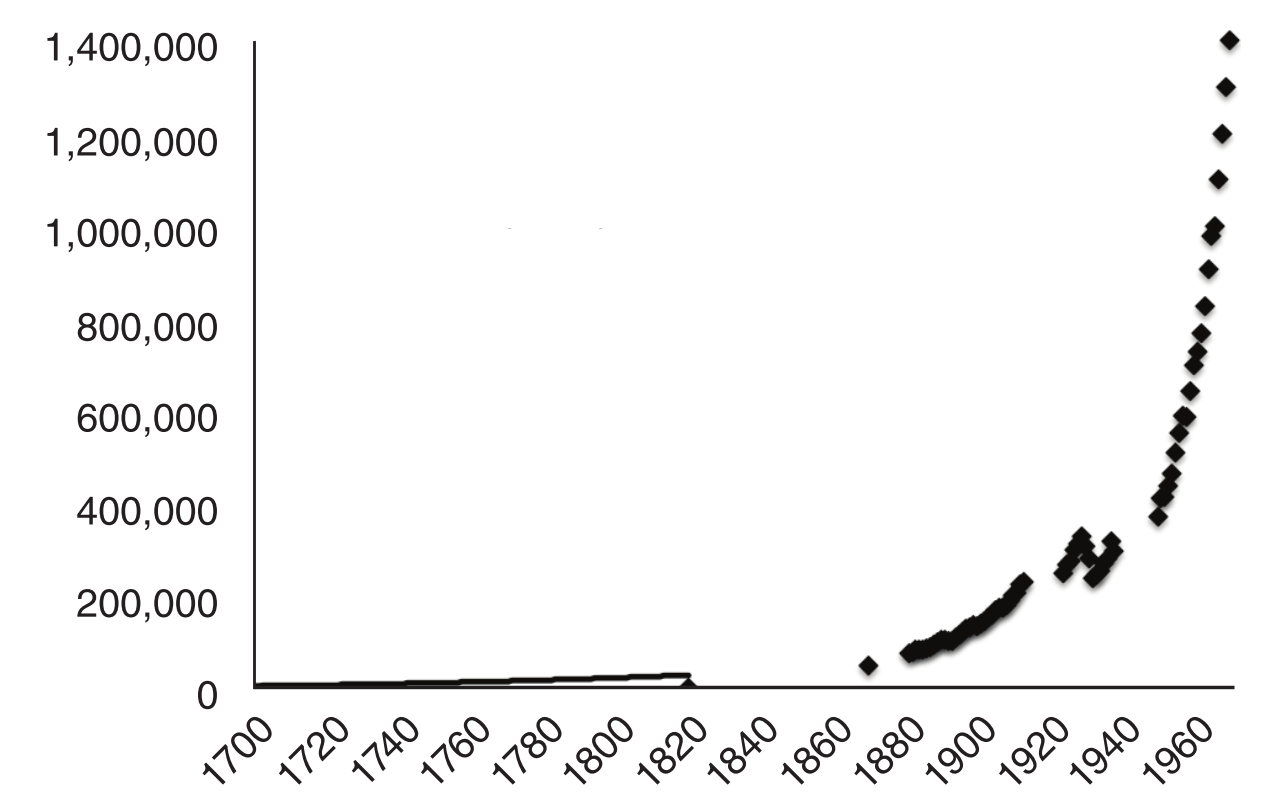
Source: Figure 1 Panel A of Pascali (2017)
World Exports at constant prices (1990 US dollars in million)
Late 19c expansion of international trade (cont.)
Vast "open" spaces of the Americas became valuable
Crops to cultivate
Minerals to extract
could now be cheaply transported to Europe
Who could access to these "open" spaces in U.S. and Mexico?
Late 19c expansion of international trade (cont.)
Mexico (and most other Latin American countries)
Frontier lands allocated to the politically powerful
30,000 of Yaqui people of Sonora:
deported to work in henequen plantations of Yucatan
| economic institutions | ||
|---|---|---|
| Secure for everyone |
Property rights | Insecure for majority of people |
| Free | Occupational choice |
Forced labor |
| Free | Entry of new businesses | Prevented by monopolies |
| Unbiased | System of laws | Biased for the powerful/rich |
| Promoted | Public service provision | Discouraged |
Economic Institutions
Inclusive
Extractive
Property rights
Secure for everyone
Insecure for
majority of people
Occupational choice
Free
Forced labor
Entry of
new businesses
Free
Prevented by
monopolies
System of laws
Unbiased
Biased for
the powerful / rich
Public service provision
Provided
Limited
Late 19c expansion of international trade (cont.)
U.S.
Frontier lands given to broad range of people by legislative acts
"By 1934, over 1.6 million homestead applications were processed and more than 270 million acres—10 percent of all U.S. lands—passed into the hands of individuals" (U.S. National Archives)
| economic institutions | ||
|---|---|---|
| Secure for everyone |
Property rights | Insecure for majority of people |
| Free | Occupational choice |
Forced labor |
| Free | Entry of new businesses | Prevented by monopolies |
| Unbiased | System of laws | Biased for the powerful/rich |
| Promoted | Public service provision | Discouraged |
Economic Institutions
Inclusive
Extractive
Property rights
Secure for everyone
Insecure for
majority of people
Occupational choice
Free
Forced labor
Entry of
new businesses
Free
Prevented by
monopolies
System of laws
Unbiased
Biased for
the powerful / rich
Public service provision
Provided
Limited
Antitrust law enforcement
Bill Gates and Carlos Slim: the world's two richest men
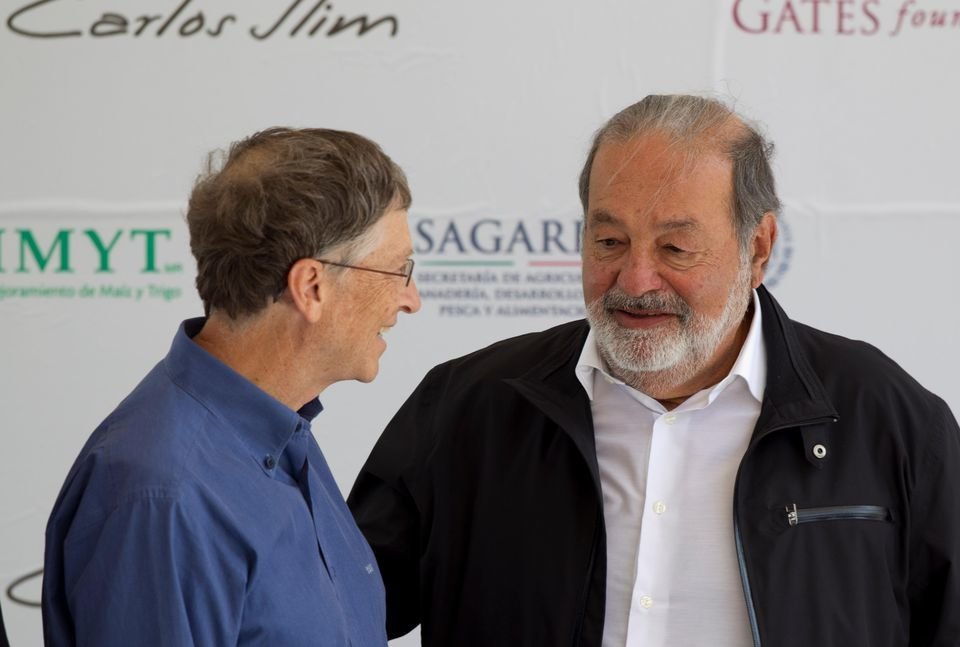
Image source:
Antitrust law enforcement (cont.)
Bill Gates
Sued by U.S. Department of Justice in 1998
for abusing monopoly power
to force Windows customers to use Internet Explorer
Carlos Slim
Became rich by acquiring Telmex (privatized telecom monopoly)
His bid for auction wasn't the highest


Investigated by Mexican Competition Commission in 1996
He settled the case by withdrawing the bundling
But regulatory authorities couldn't limit his monopoly power
| economic institutions | ||
|---|---|---|
| Secure for everyone |
Property rights | Insecure for majority of people |
| Free | Occupational choice |
Forced labor |
| Free | Entry of new businesses | Prevented by monopolies |
| Unbiased | System of laws | Biased for the powerful/rich |
| Promoted | Public service provision | Discouraged |
Economic Institutions
Inclusive
Extractive
Property rights
Secure for everyone
Insecure for
majority of people
Occupational choice
Free
Forced labor
Entry of
new businesses
Free
Prevented by
monopolies
System of laws
Unbiased
Biased for
the powerful / rich
Public service provision
Provided
Limited

Today's Road Map
Spanish Colonization of the Americas
English Colonization of North America
Political Institutions of the U.S. and Mexico after independence
Term paper preparation #2
Economic Institutions of the U.S. and Mexico
Consequences: Two Nogales
Two Nogales
Image source: mapsofworld.com
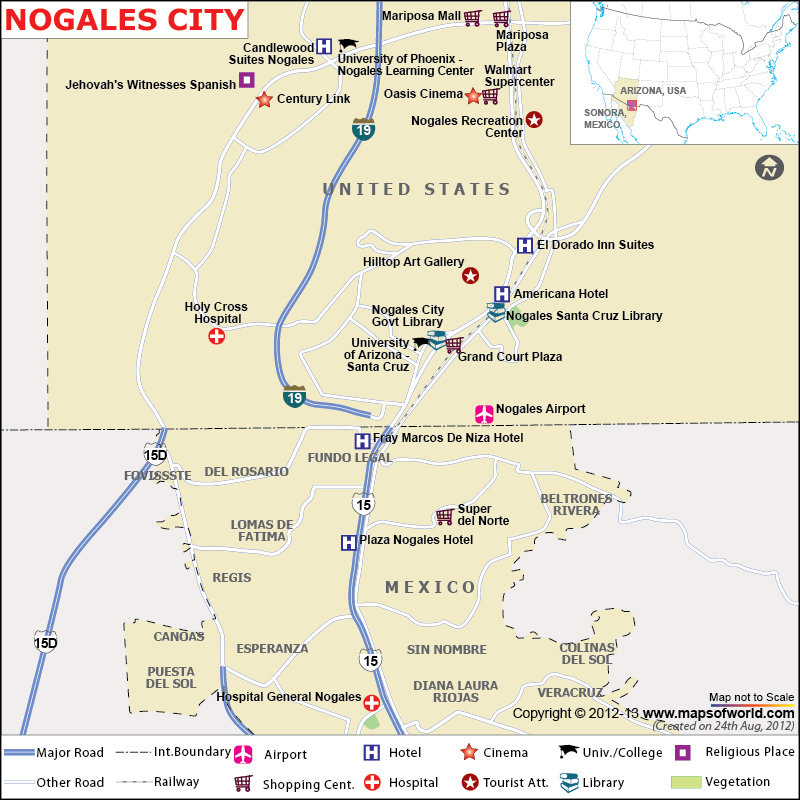
Nogales, Sonora
Mexico
Same geography & culture (both were part of Mexico until 1853)
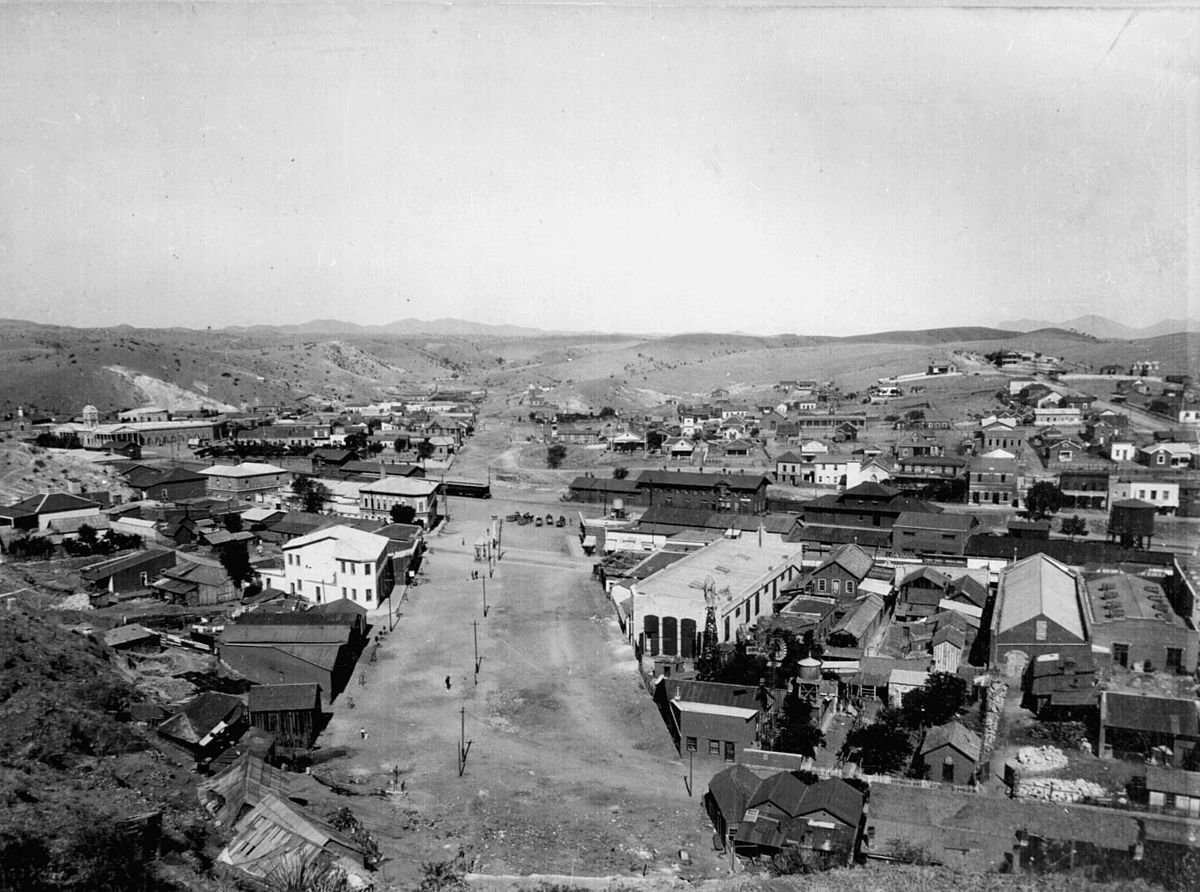
Image source:
Two Nogales circa 1899
Nogales, Arizona
U.S.
Nogales, Sonora
Mexico
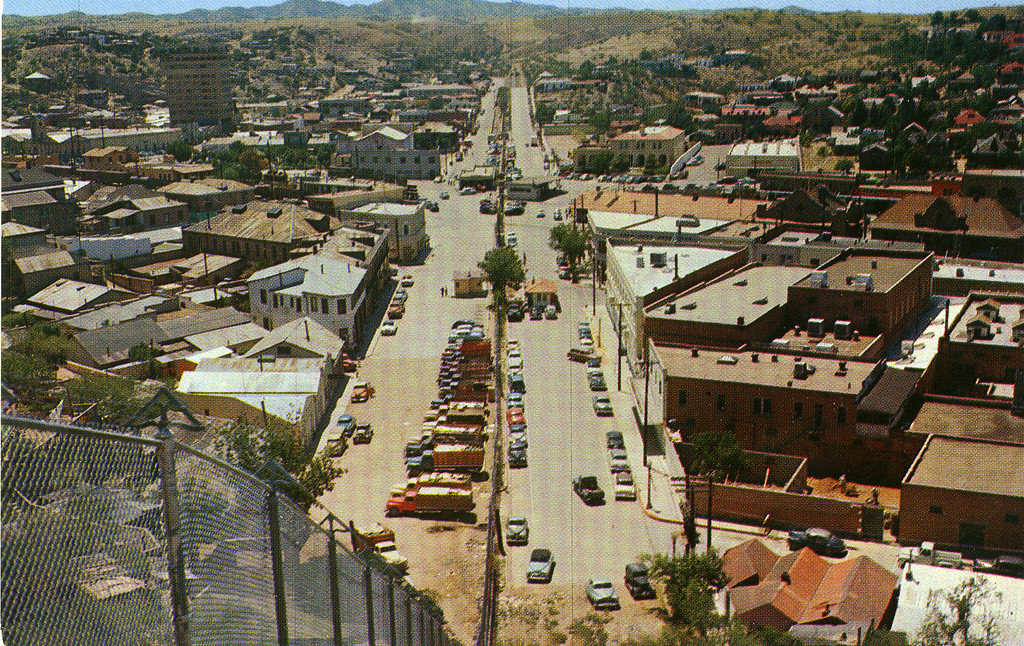
Image source:
Two Nogales today
Nogales, Arizona
U.S.
Nogales, Sonora
$10,000 / year
Teenagers NOT in school
High infant mortality
No public health care
Roads in bad conditions
High crime rates
Two Nogales today (cont.)
Nogales, Arizona
$30,000 / year
Teenagers in school
High life expectancy
Medicare
Good infrastructure
Law and order

Today's Road Map
Spanish Colonization of the Americas
English Colonization of North America
Political Institutions of the U.S. and Mexico after independence
Term paper preparation #2
Economic Institutions of the U.S. and Mexico
Consequences: Two Nogales
| economic institutions | ||
|---|---|---|
| Secure for everyone |
Property rights | Insecure for majority of people |
| Free | Occupational choice |
Forced labor |
| Free | Entry of new businesses | Prevented by monopolies |
| Unbiased | System of laws | Biased for the powerful/rich |
| Promoted | Public service provision | Discouraged |
Economic Institutions
Inclusive
Extractive
Property rights
Secure for everyone
Insecure for
majority of people
Occupational choice
Free
Forced labor
Entry of
new businesses
Free
Prevented by
monopolies
System of laws
Unbiased
Biased for
the powerful / rich
Public service provision
Provided
Limited
How to measure economic institutions?
Economic Institutions
Inclusive
Extractive
Property rights
Secure for everyone
Insecure for
majority of people
Occupational choice
Free
Forced labor
Entry of
new businesses
Free
Prevented by
monopolies
System of laws
Unbiased
Biased for
the powerful / rich
Public service provision
Provided
Limited
How to measure economic institutions?
For this aspect of institutions, there is a famous dataset
Conducted by World Bank (annually since 2004)
Law firms are surveyed to collect cross-country data on
Operates in the largest business city
100% domestically owned
10-50 employees
etc.
Business environments for a hypothetical, identical firm
Among 11 indicators, the following is relevant to us
Starting a business
# of procedures
# of days
Amount of fees
Amount of minimum capital
Doing Business surveys (cont.)
to register business
Examples of procedures to set up a firm

Source: Table 1 of Djankov et al. (2002)
Doing Business surveys (cont.)
Policy-makers in developing countries want to be ranked high
to attract foreign investment

In 2014
India's Prime Minister
Narendra Modi publicly
said he would aim 50th
e.g.
Image source: Scroll.in
Doing Business surveys (cont.)
Limitations
Doesn't measure the actual enforcement
Hypothetical firm may be irrelevant for a country
See Besley (2015) for more detail
Doing Business surveys (cont.)
How to obtain data
Click the blue "Select an economy" button
Search for your country
Week Five
Chapter 4
Week Six Chapter 1
Week Seven
Chapter 10
United States
vs Mexico
from colonization
to early 20c
Weeks 5-7: Origins of inclusive institutions
Western
vs Eastern Europe
after Black Death
in 14c
Spain vs England
after Rise of Atlantic
Trade in 16c
Australia
French Revolution
and its spread to
Western Europe
Japan vs China
in 19c
Next week
Your to-do list until next class
Read Chapter 10 & pp. 362-363
and post questions on Prulu
1
2
3
Visualize the economic performance
of the country of your choice (if you haven't)
Summarize the regulation of entry
in the country of your choice
Politics through the Lens of Economics (2018): Lecture 6
By Masayuki Kudamatsu
Politics through the Lens of Economics (2018): Lecture 6
- 2,271



